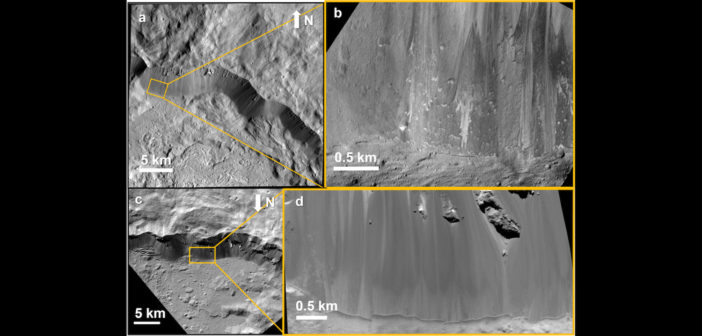The images above show two regions on the surface of Ceres, the only dwarf planet in the inner solar system. The larger-scale views of the two regions (left panels) and their zoom-ins (right panels) reveal fine-debris landslides tumbling down the walls of a crater on this airless body. In a new publication led by Elizabeth Palmer (University of Southern California), a team of scientists has combined existing observations of Ceres with laboratory experiments to better understand the properties of this dwarf planet’s surface. They find that Ceres’s uppermost surface layer is much more porous than other bodies like it, providing an opportunity for it to retain small, hidden pockets of volatiles — substances that should normally evaporate from airless bodies — across its surface. The authors speculate that Ceres’s porous surface is created by activity like avalanches of fine particles, as seen above. To learn more about the authors’ results, check out the original article below.
Citation
“Exploring Ceres’s Unusual Regolith Porosity and Its Implications for Volatile Retention,” Elizabeth M. Palmer et al 2021 Planet. Sci. J. 2 182. doi:10.3847/PSJ/ac0b3e
